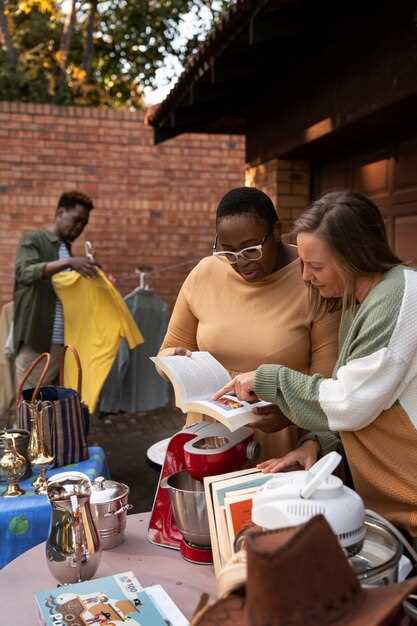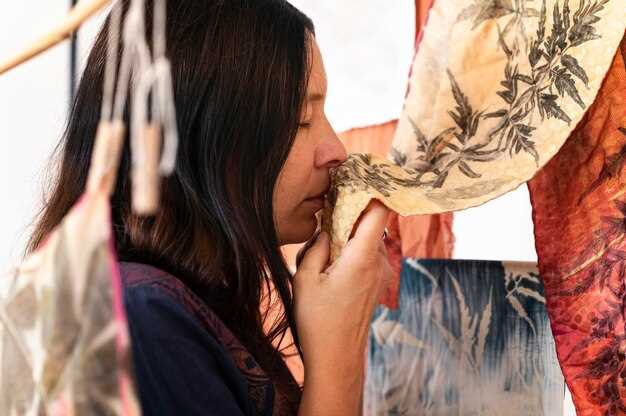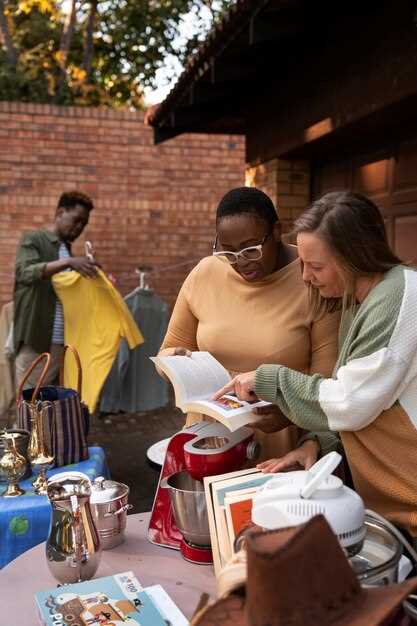The revitalization of indigenous languages serves as a powerful tool for preserving cultural heritage. Communities must prioritize the intergenerational transmission of their languages. This ensures that linguistic knowledge is not lost but passed down to younger generations. Schools can integrate indigenous languages into curricula, enhancing students’ cultural identity and pride.
Engaging with technology provides opportunities to develop resources that accessible to all. Communities can create mobile applications, online courses, and interactive videos that teach their languages. Collaborating with local universities and language organizations ensures the support and expertise needed to develop these tools effectively.
Community events offer platforms for sharing indigenous languages, reinforcing social bonds and cultural practices. Organizing language immersion camps or storytelling nights fosters an interactive environment where individuals can practice speaking. This hands-on approach encourages participation and revitalizes the use of indigenous languages in daily life.
Finally, documenting languages through audio and video recordings plays a key role in preservation efforts. This creates a record that can be used for teaching and learning, safeguarding the language for future generations. By combining these strategies, communities can achieve meaningful revitalization and keep their cultural heritage thriving.
Strategies for Language Documentation in Indigenous Communities

Engage community members in the documentation process. Arrange workshops where elders and fluent speakers share stories, songs, and traditional knowledge. Recording these sessions provides valuable resources and strengthens intergenerational ties.
Utilize mobile technology for field recordings. Equip speakers with simple devices for capturing spontaneous conversations and daily interactions. This approach ensures authenticity and richness in context, enhancing the linguistic archive.
Implement participatory methods. Involve learners in transcribing and translating materials. This not only builds their skills but also encourages active participation in preserving their language.
Create a digital repository. Establish a user-friendly platform for storing audio, video, and written materials. Ensure accessibility for community members to contribute and access resources freely.
Collaborate with linguists who understand local contexts. Their expertise can assist in implementing best practices while respecting cultural sensitivities. Joint projects can yield scholarly insights while supporting community objectives.
Conduct regular community meetings to review progress. This encourages feedback and adjustments, ensuring that documentation efforts align with community needs and priorities.
Develop educational programs focused on language preservation. Integrate language lessons into local schools and adult education, fostering a sense of pride in linguistic heritage.
Promote cultural exchanges among different communities. Sharing experiences and strategies can inspire innovative approaches to documentation and revitalization.
Establish partnerships with academic institutions. Engage students in community-based research projects, providing them with real-world learning experiences while benefiting from fresh perspectives.
Lastly, remember to celebrate milestones and achievements in language documentation. Hosting events where the community can showcase their language through performances, exhibitions, or storytelling reinforces the significance of their cultural heritage.
Innovative Technology for Teaching Indigenous Languages

Utilize mobile applications specifically designed for Indigenous language learning. Platforms like “Birchbark House” offer interactive lessons and resources that engage users through storytelling and games, making language acquisition enjoyable.
Incorporate virtual reality (VR) experiences that immerse users in culturally significant settings. Apps such as “ImmerseMe” allow learners to practice language skills in real-world scenarios, from marketplaces to traditional ceremonies, enhancing their contextual understanding.
Leverage social media platforms to create language learning communities. Groups on Facebook or Instagram can facilitate peer interactions, sharing resources, and organizing live practice sessions, promoting a collaborative learning environment.
Adopt artificial intelligence (AI) to provide personalized learning experiences. Tools like ChatGPT can offer conversational practice, tailoring responses based on the user’s proficiency level and helping to reinforce vocabulary and grammar in real-time.
Encourage the use of podcasts or YouTube channels featuring native speakers discussing cultural topics. This exposure not only improves listening skills but also deepens the connection to the culture associated with the language.
Support local language initiatives by developing localized software that reflects community-specific dialects and traditions. Engaging community members in the creation process ensures relevance and respect for cultural nuances.
Promote gamification in language learning through platforms such as Duolingo, which introduce competitive elements and rewards, motivating learners to progress while enjoying the process.
Establish partnerships with educational institutions to integrate Indigenous languages into their curriculums, using technology as a tool for innovative teaching methods and resources.
Role of Storytelling in Language Preservation Efforts

Utilize storytelling as a practical method for revitalizing indigenous languages. Engage community members in storytelling sessions to create a space where traditional narratives and cultural practices intertwine. This interactive approach encourages fluent speakers to share their knowledge while simultaneously involving younger generations in the learning process.
Building Interpersonal Connections
Encourage families to participate in storytelling. This practice strengthens bonds among generations and cultivates a shared language environment. Children listen to stories from elders, absorbing vocabulary and grammatical structures naturally. This method enhances language retention and infuses a sense of pride in cultural heritage, as narratives often reflect the community’s values and history.
Documenting and Sharing Stories
Record storytelling sessions to create a digital archive that future learners can access. Use audio and video formats, ensuring the stories remain authentic and engaging. Distribute these resources through community workshops and online platforms, expanding the reach. Collaborate with educational institutions to incorporate these materials into curricula, allowing a broader audience to experience and learn the language through stories.
Encourage creativity by inviting community members to develop their original stories. This not only enriches the existing narrative pool but also builds confidence and encourages participants to use the language actively. Organize storytelling contests or festivals to celebrate these contributions, making language learning enjoyable and culturally significant.
Incorporating storytelling into language preservation strategies promotes not only linguistic skills but also cultural continuity. This engaging method serves as a bridge from past to present, ensuring the language thrives within the community.
Building Community Engagement in Language Revitalization
Involve community members from the outset by organizing language workshops that suit all ages. Create engaging activities that encourage participation, such as storytelling sessions, traditional games, and music featuring native languages. Promote a welcoming atmosphere where participants feel comfortable sharing their knowledge and experiences.
Collaborate with Local Organizations
Partner with schools, cultural centers, and local businesses to enhance outreach. Host joint events that leverage existing community gatherings. This approach not only increases visibility but also demonstrates a collective commitment to language revitalization.
Utilize Social Media for Outreach
Establish an online presence through social media platforms to reach diverse audiences. Share success stories, upcoming events, and educational resources. Encourage community members to contribute content, such as videos or articles in their native languages, to create a sense of ownership and pride.
| Activity | Target Audience | Expected Outcome |
|---|---|---|
| Language Workshops | All ages | Increased language proficiency |
| Storytelling Sessions | Children | Enhanced cultural understanding |
| Social Media Campaigns | Young adults | Greater community involvement |
| Cultural Events | General public | Broader awareness and appreciation |
Encourage feedback from participants after events to refine future activities. Conduct surveys or informal discussions to gauge community interests and preferences. Adapt programs based on this feedback to ensure they meet evolving needs.
Celebrate progress and milestones to maintain enthusiasm. Recognize contributions of individuals and groups in revitalizing the language. Host annual celebrations showcasing various aspects of the culture and language, reinforcing the community’s commitment to preservation.
Educational Programs Supporting Indigenous Language Learners
Implement community-based language immersion programs to enhance fluency among learners. These programs often involve local speakers guiding participants through everyday activities in the indigenous language, ensuring practical application and deeper cultural connection.
Collaboration with Schools
Partnering with local educational institutions strengthens language preservation efforts. Encourage schools to integrate indigenous language classes into their curriculum. Hire qualified instructors from the community who understand both the language and cultural nuances.
- Develop age-appropriate learning materials that reflect local traditions and stories.
- Organize bilingual education initiatives to support both indigenous and dominant languages.
Online Resources and Training
Leverage digital platforms to expand access to language resources. Create engaging online courses or workshops for remote learners. Include interactive elements like quizzes, recordings of native speakers, and virtual conversation practice.
- Utilize social media for language challenges and daily vocabulary sharing.
- Launch mentorship programs that connect fluent speakers with learners for personalized guidance.
Encourage community engagement by hosting cultural events that celebrate and promote language use. These gatherings can serve as a platform for sharing stories, music, and traditional practices, further embedding the language within the community.
Collaborative Projects Between Indigenous Groups and Linguists
Indigenous communities and linguists frequently partner to revitalize languages. These collaborations take various forms, each contributing to cultural preservation and language development.
Community-Led Language Documentation
Many projects emphasize community involvement in language documentation. Linguists work closely with Indigenous speakers to record native narratives, songs, and everyday conversations. This ensures that the language captures authentic expressions and usage. For example:
- The Elders’ Story Project: In this initiative, elders share oral histories while linguists document and analyze the recordings, creating lasting resources.
- Language Apps: Indigenous communities collaborate with linguists to develop mobile applications featuring vocabulary, phrases, and audio clips. These enhance accessibility and encourage learning.
Language Revitalization Workshops
Workshops serve as platforms for knowledge exchange. These gatherings focus on teaching traditional language skills, often combining cultural practices with language learning. The interaction fosters community engagement and connection to heritage. Typical activities include:
- Creating lesson plans that integrate storytelling and traditional crafts.
- Hosting language immersion camps to practice conversation in a natural setting.
- Offering online courses led by both Indigenous speakers and linguists, broadening reach and impact.
Such collaborative efforts strengthen not only linguistic skills but also cultural identity among participants. Ultimately, these projects build a path for continuous language use and appreciation within communities.
Government Policies Impacting Indigenous Language Revitalization
Governments must prioritize the inclusion of Indigenous languages in public education curricula. This can happen through bilingual education programs that incorporate both Indigenous and dominant languages, allowing children to learn and appreciate their cultural heritage from an early age. For example, Canada has implemented the Indigenous Languages Act, which provides funding to support language education initiatives.
Legislation should enhance funding for language revitalization projects. Grants should be directed towards developing teaching materials, training fluent speakers as educators, and creating community-based language programs. New Zealand’s Maori Immersion Schools exemplify successful programs that receive government support, fostering a strong linguistic environment.
Encouraging local communities to participate in language policy discussions strengthens the connection between government decisions and community needs. Engaging Indigenous leaders in policymaking ensures that initiatives reflect their cultural context and aspirations. The Australian Government’s Aboriginal and Torres Strait Islander Languages Framework showcases how collaboration can lead to meaningful outcomes.
Promoting media and technology that utilize Indigenous languages can expand their reach. Supporting radio stations, television programming, and online resources in Indigenous languages provides platforms for everyday use. For instance, the use of social media in Indigenous languages can create contemporary relevance and foster community engagement.
Establishing language preservation centers dedicated to research and documentation plays a critical role. These centers can serve as archives while promoting the use and teaching of Indigenous languages through workshops and cultural events. Countries such as the United States have seen success through initiatives like the Native American Language Preservation and Promotion Act.
Regularly assessing the impact of language policies allows governments to make necessary adjustments that enhance outcomes. Surveys and community feedback can inform policy effectiveness and ensure they align with community objectives. Tracking progress helps maintain accountability and supports ongoing funding initiatives.
Ultimately, government policies must reflect a commitment to the revitalization of Indigenous languages as a means of preserving cultural heritage. By actively supporting education, community involvement, media production, and preservation efforts, authorities can create an environment where Indigenous languages thrive.
Challenges in Reviving Endangered Indigenous Languages
Establish dedicated language immersion programs for children. Research shows that early exposure to a language boosts retention and fluency. Language nests, where elders teach young ones, provide a nurturing environment to facilitate learning and cultural exchange.
Resource Limitations
Funding presents a significant barrier to language revitalization efforts. Many communities struggle to secure financial support for educational resources, training materials, and instructor salaries. Establish partnerships with local governments, NGOs, and educational institutions. Apply for grants specifically aimed at cultural preservation to ensure sustainability.
| Resource Type | Examples | Potential Funding Sources |
|---|---|---|
| Language Materials | Dictionaries, textbooks | Cultural foundations, educational grants |
| Training Programs | Teacher workshops, community classes | Government funding, private donors |
| Technology Integration | Language apps, online courses | Tech grants, partnerships |
Cultural Attitudes and Perceptions
Changing perceptions of Indigenous languages influences revitalization success. Initiate awareness campaigns to celebrate native languages and their histories. Encourage public acknowledgment of the cultural significance attached to language through local events and media outreach. Highlight positive role models within the community who embrace their heritage, showcasing the benefits of bilingualism.
Utilizing Media and Art to Promote Indigenous Languages
Create engaging content through multimedia platforms such as podcasts, videos, and social media. These tools capture attention and make learning accessible and enjoyable. For instance, producing short films in indigenous languages can provide context and emotional resonance, leading to a deeper connection with the language.
Incorporating Traditional Art Forms
Merge indigenous languages with traditional art forms. Encourage local artists to create pieces that incorporate language elements–paintings with words, sculptures that tell stories, or weaving that features phrases. This approach celebrates cultural identity while fostering language use.
- Host art exhibitions featuring bilingual descriptions to attract diverse audiences.
- Encourage community workshops that involve creating art inspired by language themes.
- Collaborate with schools and universities for projects that integrate art and indigenous languages.
Leveraging Social Media
Use platforms like Instagram, TikTok, and YouTube to share short language lessons, cultural stories, or music in indigenous languages. Visual and auditory content appeals to younger generations who engage deeply with these platforms.
- Create a challenge or campaign that encourages users to share videos speaking indigenous languages.
- Partner with influencers who are passionate about cultural heritage to reach a wider audience.
- Develop engaging hashtags to promote language learning and cultural sharing.
Utilizing media and art not only preserves indigenous languages but also builds community and strengthens cultural ties. These creative methods engage current speakers while attracting new learners, ensuring that languages thrive in contemporary contexts.
Measuring the Success of Language Revitalization Initiatives
Track language use within the community. Collect data on speakers, learners, and the frequency of language use in everyday settings. Regular surveys can help paint an accurate picture of how often the language is spoken among different age groups.
Implement educational assessments to evaluate the proficiency levels of learners. Standardized tests can identify areas of strength and those needing improvement. Feedback from educators about teaching methods also proves valuable.
Analyze community engagement. Host gatherings that celebrate language and culture, such as festivals or storytelling events. Count attendance and gather feedback to assess the interest and involvement of community members in these initiatives.
Encourage intergenerational transmission. Track how many families use the language at home and observe the dynamics of language use between parents and children. This practice ensures that younger generations are exposed to and practice the language regularly.
Utilize technology to monitor online presence. Assess the use of language in digital platforms through apps, websites, or social media. The growth of online resources signifies a positive trend in language usage and interest.
Document success stories. Collect testimonials from individuals who have benefited from revitalization programs. Personal narratives can inspire others and showcase the impact of these initiatives on daily life and identity.
Establish partnerships with academic institutions for research support. Collaborating with scholars can enhance the understanding of language trends and lead to innovative strategies for further initiatives.
Regularly review and adjust programs based on collected data. Conducting assessments periodically ensures that revitalization efforts remain relevant and aligned with the community’s needs and goals.
Video:
The Resilience of Indigenous Languages and Cultural Heritage
The Resilience of Indigenous Languages and Cultural Heritage by Top 10 You Should Know 35 views 1 year ago 4 minutes, 48 seconds
Q&A:
What are the main reasons for the revitalization of Indigenous languages?
The revitalization of Indigenous languages is driven by several key factors. Firstly, the preservation of cultural identity is crucial for Indigenous communities. Language serves as a vessel for traditions, stories, and values that have been passed down through generations. Secondly, the restoration of these languages can improve community cohesion and pride, as members reconnect with their heritage. Finally, revitalizing Indigenous languages contributes to the linguistic diversity of the world and can enrich global knowledge by providing unique perspectives and insights that are often rooted in specific cultural contexts.
How do Indigenous language revitalization programs typically operate?
Indigenous language revitalization programs often involve a combination of education initiatives, community involvement, and resource development. These programs might include language immersion schools, after-school language classes, and the creation of educational materials like dictionaries, textbooks, and online resources. Community events such as workshops, cultural festivals, and storytelling sessions also play a significant role in these efforts. Additionally, some programs may engage with technology, using apps and multimedia resources to make learning more accessible and engaging for younger generations.
What role does technology play in preserving Indigenous languages?
Technology plays a significant role in the preservation and revitalization of Indigenous languages by providing innovative tools for language learning and dissemination. Online platforms and mobile applications can facilitate language lessons and offer interactive teaching methods that appeal to younger audiences. Social media can also be used to create communities where speakers and learners can practice their language skills and share cultural content. Moreover, digital archives of songs, stories, and other resources allow for the preservation of traditional knowledge in a format that can be easily accessed and shared.
What challenges do communities face in the revitalization of their languages?
Communities face several challenges in language revitalization efforts. One significant challenge is the limited number of fluent speakers, often due to historical factors such as colonization and forced assimilation, which have led to language loss. Additionally, there can be a lack of funding and resources dedicated to these programs, making it difficult to implement effective language education. There may also be resistance from younger generations who prioritize learning widely spoken languages for economic reasons, which can overshadow the importance of their Indigenous languages. Finally, social stigma or lack of prestige associated with Indigenous languages can hinder revitalization efforts.
What success stories exist in the area of Indigenous language revitalization?
There are several inspiring success stories in the context of Indigenous language revitalization. For instance, the Māori language in New Zealand has seen a notable revival due to government support and the establishment of immersion schools. The Hawaiian language also experienced a resurgence following the creation of an immersive language program that has been successful in revitalizing the cultural connection among the youth. Similarly, the Ojibwe language has benefited from community-led initiatives and the use of digital resources to engage new learners, leading to a new generation of speakers. These examples highlight the potential for recovery and growth when communities actively engage in their language revitalization efforts.
